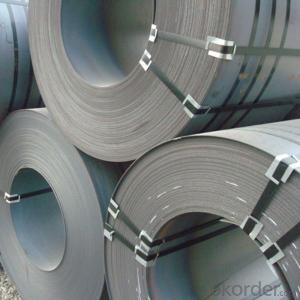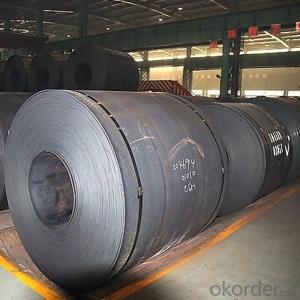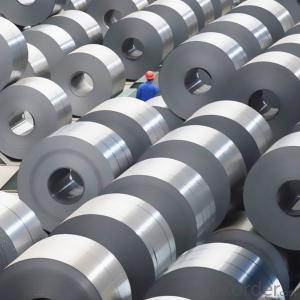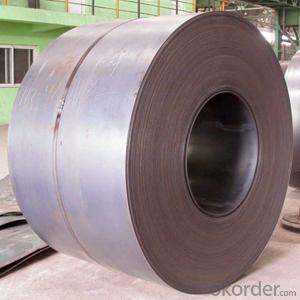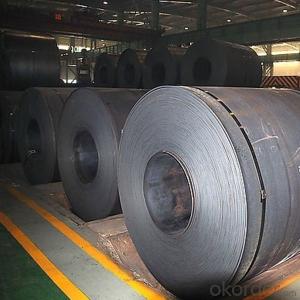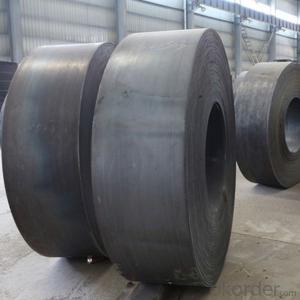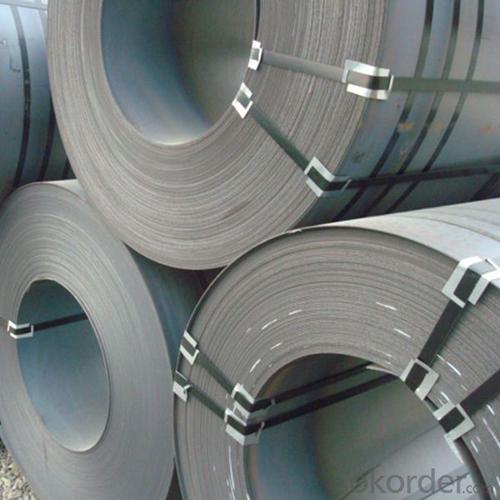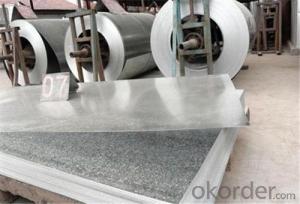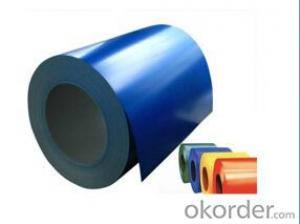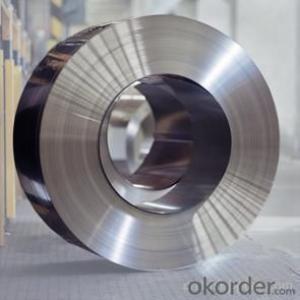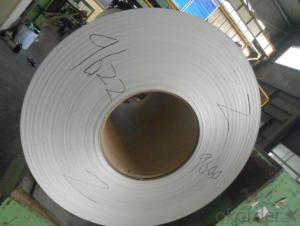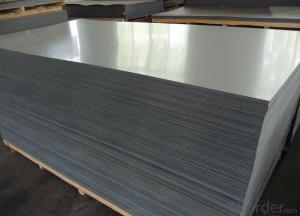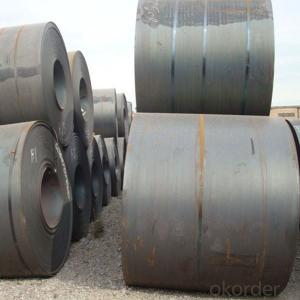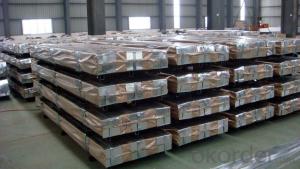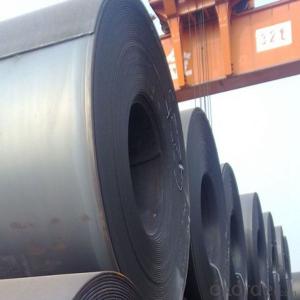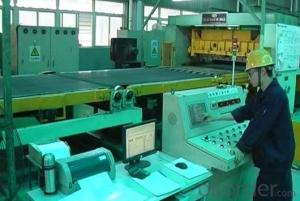Steel Coils In Hot Rolls Galvanized Steel Sheets Made In China
- Loading Port:
- Tianjin
- Payment Terms:
- TT OR LC
- Min Order Qty:
- 50 m.t.
- Supply Capability:
- 20000 m.t./month
OKorder Service Pledge
OKorder Financial Service
You Might Also Like
Specification
DESCRIPTION FOR SS400 CARBON STEEL SHEET
1.Thickness: 1-200mm
2.Width: 100-3000mm
3.Length: 1000-12000mm
4. Applications :mining machinery, environmental protection, engineering
5. Grade:SS400 A 36 Q195.Q235.Q345.SPCC.SPCH
6.Surface : Hot Rolled Cold Rolled Galvanized Steel
DESCRIPTION FOR CARBON STEEL PLATE
Product | carbon steel plate price per ton |
Place of origin | Tianjin,China mainland |
MOQ | 25 tons |
Thickness | 1mm-200mm |
Width | 1000mm-3000mm |
Length | 1000mm-2000mm |
Application | widely |
Standard | AISI,ASTM,BS,DIN,JIS,GB,etc |
Grade | A572,A573,A633,A678,A709,A710,G3101,G3136,etc |
Tpye | Steel plate |
Surfacing | Coated |
Productive Technology | Hot Rolled & Cold Rolled |
Price | FOB USD 500-900 per ton |
Port | TIANJIN,SHANGHAI |
Payment Terms | L/C,T/T,Western Union,MoneyGram |
Product Ability | 1000 tons per month |
Delivery | 10 days after deposit or according to customers' quantity |
Packing | standard seaworthy export packing or as the request of customers |
PACKING:
1.Big thickness:by bulk vessel
2.Small thickness:packed by steel strips and shipped by container
3.According to the requirements of customers'
TRADE TERMS :FOB, CFR, CIF
DETAILED PICTURES FOR STEEL COILS

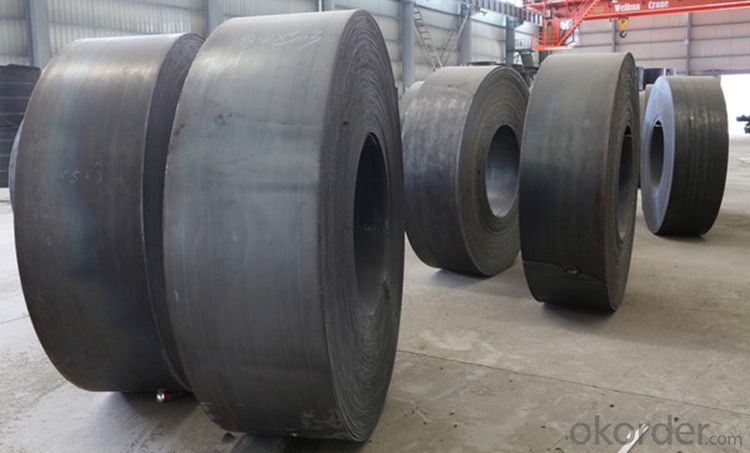
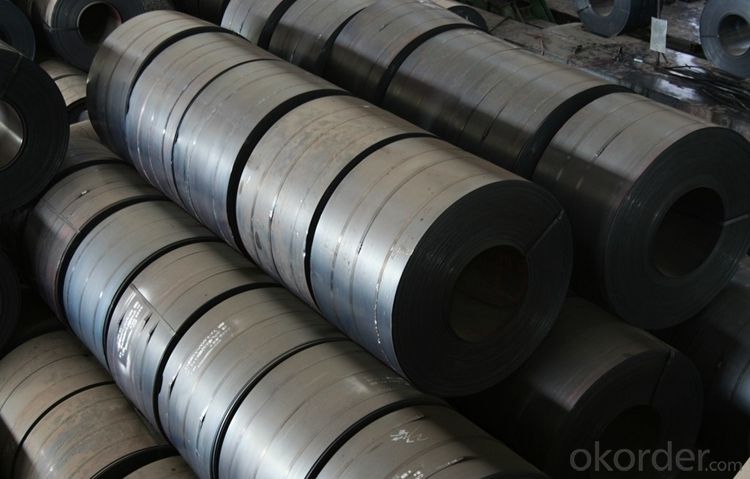
EXPORT MARKET FOR STEEL COILS/SHEETS
Our target market is the international market. Every year we export most of products to countries like India, Pakistan, South Korea, Brazil, Australia, South Africa, Spain, Sri Lanka, Taiwan, Hong Kong, etc.
FAQ:
Q:What are the advantages of your company ?
A: We have many professionals, technical personnel, more competitive prices and best after-dales service than other steel companies.
Q:Can you arrange the shipment ?
A: Sure we can help you with the shipment. We have forwarders who have cooperated with us for many years.
- Q: What is the difference between regular steel stainless steel? Why does steel rust but stainless wont? Is stainless some kind of alloy or something? Any knowledgeable input would be great. Thanx!
- There are many things in life that I wonder about. Being in the steel industry and selling stainless steel I have at one point in my life asked myself, why do they call it stainless steel? What makes it stainless? It doesn't take much to find out but here is a very brief synopsis of what makes stainless steel stainless so that you can check one more thing off the list in your quest for knowledge. Stainless Steel might or might not have been invented by a man named Harry Brearley in 1912. Steel has been around for hundreds of years but it hasn't always been stainless. Only after the exact combination of elements had been achieved did we start calling a certain type of steel stainless. His magic potion contained the keys to what is now called stainless steel. That being said, the true inventor of stainless is still an ambiguous cloud at best. However, this isn't a discussion on WHO invented stainless but what stainless is and how it's actually stainless. Here is a great article posted by British Stainless Steel Association in regards to the history of stainless as a whole, see here. So what is in this magic potion that makes a steel not stain or rust? As most of us know if you leave regular steel or metal out in the elements it will rust, oxidize, or stain. Why does stainless not stain? When Harry Brearley Brearley created a steel with 12.8% chromium and 0.24% carbon, that was believed to be the first ever stainless steel. Chromium is the element in stainless that improves the corrosion resistance by forming a chromium oxide film on the steel. This very thin layer, is what allows the steel to be impermeable to rust or staining and when placed under the right conditions, it can also be self-repairing to a certain extent. There you have it. The answer is Chromium. Chromium is the element when mixed w/other elements in the proper amounts to form the thin layer that protects the steel from rusting, staining or corroding. Hope that helps you in your pursuit of knowledge.
- Q: How are steel coils used in the manufacturing of household goods?
- Steel coils are used in the manufacturing of household goods in a variety of ways. One common use is in the production of appliances such as refrigerators, washing machines, and ovens. The steel coils are shaped and formed into different parts and components of these appliances, providing strength and durability to the finished product. Additionally, steel coils are often used in the manufacturing of furniture, particularly in the construction of metal frames for chairs, tables, and bed frames. The coils can be bent, welded, or molded into the desired shape, providing a sturdy and reliable foundation for these household items. Furthermore, steel coils are also utilized in the production of kitchen utensils and cookware. The coils can be stamped or pressed into different shapes, such as pots, pans, and cutlery, creating durable and heat-resistant products that are essential for everyday cooking and food preparation. In summary, steel coils play a crucial role in the manufacturing of household goods by providing strength, durability, and versatility to a wide range of products.
- Q: Suppose that the hardness of steel is uniformly distributed, taking on values between 50 and 80 on the Rockwell B scale.Compute the probability that the hardness of a randomly selected steel specimen is less than 60. a..462b..333c..500d.2e..750 Question 8 Refer to question 7. Compute the probability that the hardness of a randomly selected steel specimen is between 70 and 75.a..167b..500c..063d..100e..
- Suppose that the hardness of steel is uniformly distributed, taking on values between 50 and 80 on the Rockwell B scale. That would be... f(x) = 1/(80 - 50), 50 ≤ x ≤ 80 . . . . . 0 elsewhere Consider this following problem.. Compute the probability that the hardness of a randomly selected steel specimen is less than 60. Here, we have... P(x 60) Oh! Know that the mean and the standard deviation of the uniform distribution function are... ? = (a + b)/2 σ = (a - b)?/12 You should get... ? = 65 σ = 75 Now... P(z (60 - 65)/75) = P(z -0.07) Hence, you should get around 0.462. Good luck!
- Q: How are steel coils used in the manufacturing of suspension springs?
- Steel coils are used in the manufacturing of suspension springs as they provide the necessary strength and resilience to support the weight of the vehicle and absorb shocks and vibrations. The steel coils are shaped and formed into the desired spring shape, which allows them to effectively compress and expand to absorb and distribute the impact and forces experienced during vehicle movement and road conditions.
- Q: I heard that the stores don't sale Steel Legion anymore...Is this true..Also I want to know why they cost more than regular Imperial Guardsmen..Such as Cadian...Do they have something Special?Also what do I need to buy to have a complete Steel Legion army..I need two squads of troops of 20's?and two sergeants for each squad.and one commiser?Well I;m guessing..someone please help...I havent played in about 4 years.
- The stock at various shops may vary, but you can buy Steel Legion miniatures through the mail order, or the Internet from GW. Cadian troopers are plastic, There are no plastic Steel Legion troops. The plastic models are (a tiny bit) not so horribly expensive as the metallic ones. The minimum requirements for your force vary from mission to mission, but a good start is 1 HQ unit 2 Troop choices. Also, the total points cost of the battle is to be considered. (Usually 500, 1000, or 1500 points.) What you described is one possible choice, although the size of IG squads is 10 and not 20. And you must include a command squad, the commissar is optional. You might change the other 20 troops for a tank, or a squad of Sentinels. Happy gaming!
- Q: I have a Charles Daly shotgun and I'm trying to find out if it is ok to shoot steel out of. The side engravings say: Charles Daly 20 GA 3 and the other side says : KBI-HBG, PA made in TurkeyOn their website it says that the barrel on the Charles Daly 300 Field is able to shoot steel but I don't see anywhere that this is a 300 model.Im also not sure if the choke is able to shoot steel. It has no engravings on it. How can I tell if this choke will work? It is the original choke that came with the gun?
- If it has removable choke tubes, just get a MOD or IMP CYL and it will work. If it is a fixed choke, depending upon how old it is, the barrel may be too thing and steel could damage the barrel. If the shotgun is less than 20 years old and with a MOD or more open choke, you should be good to go.
- Q: How are steel coils used in the production of roofing panels?
- To manufacture roofing panels, steel coils are indispensable. These coils, usually composed of galvanized or coated steel, serve as the fundamental material for producing robust and top-notch roofing panels. Initially, the steel coils undergo a sequence of operations in a production facility. These operations involve flattening, cleaning, and shaping the coils to achieve the desired dimensions and profiles for the roofing panels. This process guarantees that the steel coils possess uniform thickness and are devoid of any impurities or flaws that could compromise the final product's integrity. Once the steel coils are prepared, they are fed into a roll forming machine. In this machine, the coils are gradually bent and shaped into the specific design and size required for the roofing panels. The roll forming process imparts the panels with their distinct corrugated or standing seam profiles, which enhance their strength and ability to withstand various weather conditions. After the roll forming process, the steel coils are divided into individual roofing panels of the desired length. These panels then undergo further processing to incorporate additional features, such as coatings or finishes, to enhance protection against corrosion and improve aesthetic appeal. Protective layers, such as zinc or paint, are often applied to the steel coils to enhance their resistance to rust, UV rays, and other environmental factors. Lastly, the roofing panels are packaged and transported to construction sites or distributors for installation. The utilization of steel coils in the production of roofing panels ensures that the final product is sturdy, long-lasting, and capable of withstanding heavy loads, strong winds, and other external forces. Steel is renowned for its high tensile strength, making it an ideal material for creating durable roofing panels. In conclusion, steel coils play a vital role in the production of roofing panels. Through a series of manufacturing processes, they are transformed into the desired dimensions and profiles, ensuring consistency and quality. The resulting roofing panels are not only visually pleasing but also highly resilient, providing superior protection and longevity for buildings.
- Q: Having a new kitchen and would like to know the pros and cons of stainless steel as opposed to white appliances. I can only think of finger marks on the SS, which I believe are difficult to remove. Anyone had both that they could advise please?
- A relative had a stainless steel range. It always looked a fingerprinted mess. I have never liked it. To me, it is grey with a sheen. I hate grey. I am a white appliance person all the way. White makes the room look cleaner, brighter and larger and it is easy to keep clean. Stainless is a nightmare to keep clean. Almost forgot to mention, when we bought our house a few years ago, it had a stainless steel range, horribly marked and scratched. I got rid of it, in keeping with white.
- Q: How are steel coils inspected for surface finish using profilometry?
- Steel coils are inspected for surface finish using profilometry by measuring the surface topography using a profilometer. The profilometer scans the surface of the steel coil and records the deviations from the ideal surface. This data is then used to determine the roughness, waviness, and other surface parameters of the steel coil, providing a quantitative assessment of its surface finish quality.
- Q: I like non-stick cookware but it dont hold up no matter how much money you spend. What isthe best kind? Is there something better then stainless steel or iron skillet? I do not care if I have to use extra elbow grease to clean a pan.
- I have a combination of them both. I have Le Creuset enameled cast iron dutch-ovens, pots and pans; as well as All Clad stainless steel saute and deep-rimmed pans which have a copper core. I have one non-stick pan that I use for cooking eggs in.
Send your message to us
Steel Coils In Hot Rolls Galvanized Steel Sheets Made In China
- Loading Port:
- Tianjin
- Payment Terms:
- TT OR LC
- Min Order Qty:
- 50 m.t.
- Supply Capability:
- 20000 m.t./month
OKorder Service Pledge
OKorder Financial Service
Similar products
Hot products
Hot Searches
Related keywords
